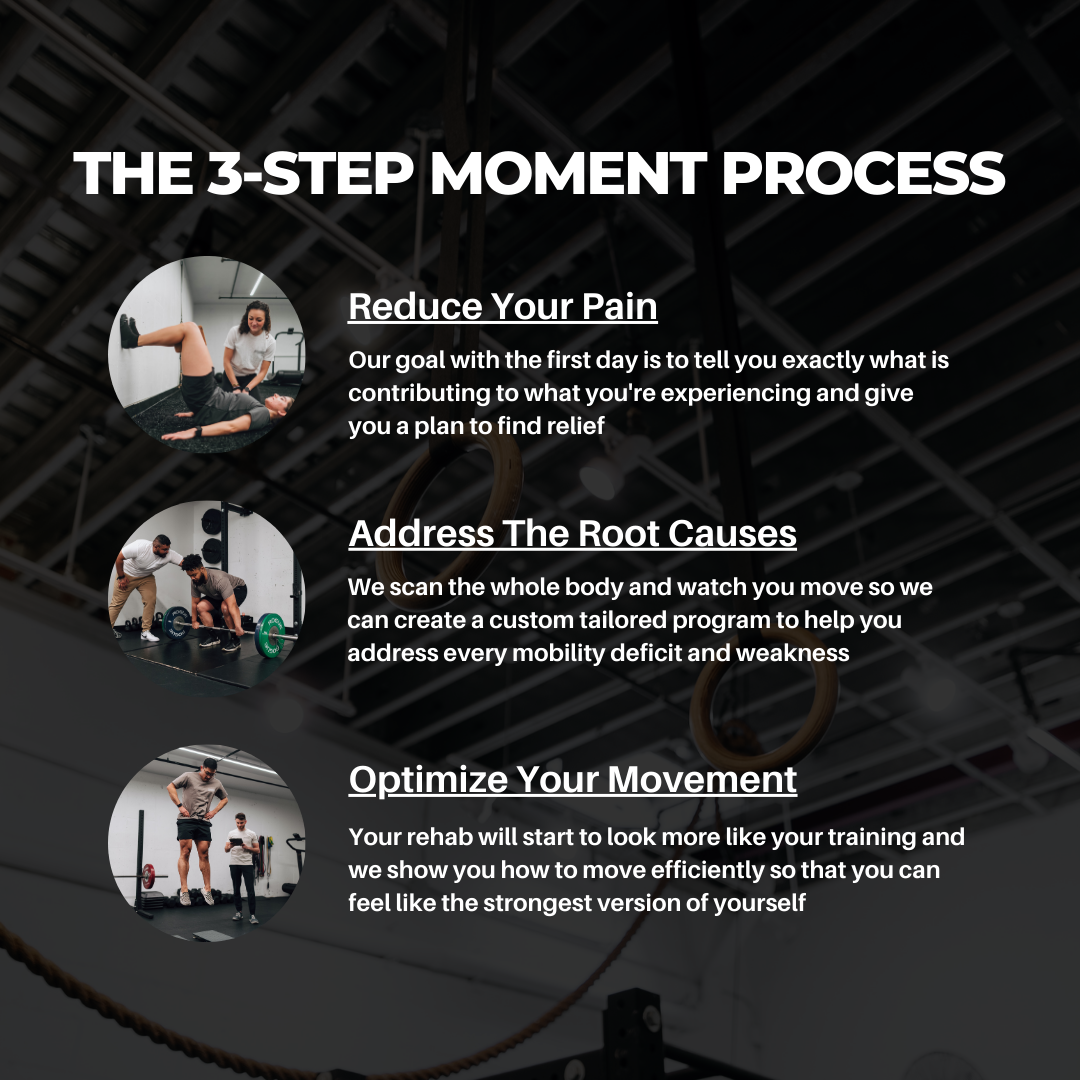The complete guide to physical therapy
What is physical therapy?
You went to see your primary care provider and after a careful examination to rule out anything truly dangerous going on, they gave you a script for physical therapy.
Physical therapy focuses on helping get back to their normal day-to-day life after having an injury by optimizing movement, restoring function, and helping people live healthier lifestyles.
These injuries can be musculoskeletal in nature but physical therapists are also trained to provide rehab in fields such as neurology, cardiopulmonary, geriatrics, and more.
What do physical therapists do?
It isn’t uncommon for people to feel frustrated managing injuries on their own using Google, YouTube, and social media but physical therapists are trained specifically in this domain. Our experience spans common sports-related injuries like muscle strains and ligament sprains all the way to orthopedic-related injuries like fractures, chronic pain, and more.
Each individual person is very different so when they experience an injury, there are a lot of factors that must be taken into consideration. Some of these nuances are not considered when getting information from the internet which is why our 1-on-1 physical therapy sessions are an hour long.
These injuries can be managed with a variety of treatments such as therapeutic modalities to manage pain, manual therapy, corrective exercise, strength training, muscular coordination, and more.
The goal of a physical therapist is to make sure that you are moving optimally so you don’t have any deficits that can cause compensations and problems down the line.
What conditions do physical therapists treat?
Physical therapists all have different specialties based on their education and experience. Our physical therapists here in Soho, Downtown Manhattan, and Long Island City, Queens are specialized in some of the following:
Neck injuries: cervicalgia, cervical arthritis, neck stiffness, postural dysfunction, and more.
Back injuries: herniated disc, degenerative disc disease, spinal stenosis, and more.
Shoulder injuries: rotator cuff tear, labral tear, shoulder dislocation, tendonitis, and more.
Hip injuries: osteoarthritis, bursitis, hip impingement, groin strain, and more.
Knee injuries: meniscus tear, ACL rehab, iliotibial band syndrome, patellofemoral pain, and more.
Foot and ankle injuries: Achilles tendinopathy, plantar fasciitis, shin splints, and more.
What are the benefits of seeing a physical therapist?
Get pain relief from musculoskeletal injuries
Improved mobility and range of motion
Restore joint health and function
Increase muscle strength
Optimize your movement quality
Proper muscle coordination
Reduce the risk of future injuries
Improvements in sleep, mood, and mental health
And more!
Is it true that physical therapists are doctorate trained? If so, what is their training like?
All physical therapists that have graduated in the United States are doctorate trained. Our degree is called a Doctorate of Physical Therapy(DPT). We spend the usual four years in undergraduate usually in a science field and then do three years of graduate school work which usually includes 3-4 clinical rotations in different specialties.
Physical therapists are recognized an allied health professionals. You will see us working alongside surgeons, physicians, and nurses in the hospital. We also collaborate with a lot healthcare providers in the outpatient setting especially if a patient is coming to see us post-operatively.
How do I find the right physical therapists?
There is no right answer to this since everyone has different needs and preferences. There are a few things that we believe every physical therapist should take into consideration despite the injury and they are the following:
Your physical therapists should allow you to feel heard by thoroughly listening to your story
Physical therapists should always provide an in-depth examination
When the physical therapists should tell you how the examination connects to your story
Your physical therapists should work hand-in-hand with you to develop a plan in a collaborative manner
Physical therapists should guide you into adopting more healthy and positive lifestyle behaviors
Your physical therapists should collaborate with your trainers, physicians, and surgeons as needed
What does a physical therapy appointment look like in your office?
Our model is different than the typical commercial clinic where your physical therapist might be seeing multiple patients at once or you might get handed off to an aide/assistant. We believe that we can only provide the highest level of care by focusing on one person at a time and making sure it is always with a doctorate trained physical therapist.
How do I schedule an appointment at your physical therapy office in New York City or Queens?
Our process is very simple, here are the steps that you need to take:
Schedule your free discovery call here.
Our goal is to make sure that we understand what you’re experiencing, it is something we have helped other people with in the past, and we can get you long-term results before asking you to commit.
Your call or screen will be done by sports physical therapists on our team.
If we think you are a good fit for what we do at Moment then we will help you get on the schedule immediately.



